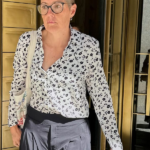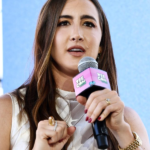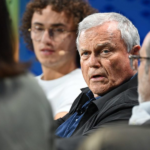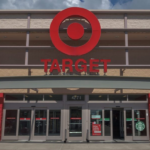The very day Elon Musk expanded the boundaries of his three-week-old autonomous ride hailing service in Austin, Joe Tegtmeyer’s Tesla tried to illegally run a railroad crossing just as a locomotive approached.
Taking what might have been a life-threatening situation seemingly in stride, Tegtmeyer then argued in favor of Tesla adding more cars to the 10 or so currently on the roads to cut waiting times that had ballooned to 20 minutes.
“These issues prove Tesla should never have launched even with just 10 vehicles,” he tells Fortune. “Yes, it works most of the time, but it blows my mind we’re still seeing issues like FSD running red lights or driving on the wrong side of the road. This shouldn’t be happening on such a regular basis.”
The problem is with each car added, the greater the statistical chance of a collision. Any robotaxi service, Waymo included, needs to be virtually flawless in order to scale the service safely—yet with Tesla there’s no sign of that, according to Martinez.
Developed with the help of a Canadian Tesla driver, his tracker is simple and easy to use: during a trip, FSD beta testers like Martinez catalog in real time problems that arise directly into the vehicle’s onboard infotainment system, where it’s stored until it can be uploaded to the internet. Drivers are incentivized through weekly recognition of the top contributors, turning it into something of a friendly competition.
Although the Austin robotaxi fleet is believed to be using a newer iteration, in Martinez’s estimation it closely approximates the performance of the version released to the public since they reveal similar shortcomings, such as driving in the wrong lane.
He believes Tesla has been more focused on meeting Musk’s June launch timetable come hell or high water than on perfecting the actual underlying technology. Since demand for his EVs dropped sharply in the first half of the year and his Cybertruck has proven to be a commercial flop, the CEO needs something to keep investors happy.
“This feels like a distraction from the declining sales numbers,” he said, adding “Elon is gambling.”
The company did not respond to a request to comment on this or any other point related to its FSD self-driving technology.
Investors have a lot of money riding on FSD, and will want answers as to how soon 10 cars in Austin can grow to thousands across the country. Only then will they get a feeling for how long it will take Tesla to leapfrog Waymo, going from zero unsupervised miles currently to the 100 million just recorded by its archrival.
“It has provided me with a feeling of safety that I’ve never had before.,” she said at an August 2023 hearing shortly before the state voted to greenlight the technology. “I get into a Waymo vehicle, not only am I able to get to where I need to be on my own terms, which is huge, but I am able to do so without the fear of being harassed, groped, assaulted, attacked or potentially worse.”
Musk staked the company’s fortune on the robotaxi service, which now must generate the profits needed to fund his Optimus robot program currently under development.
But autonomous driving at its heart is a technology steeped in statistical eventualities. How many cars are operating at the same time and how many miles do they collectively log before the first accident occurs—thousands? Millions? More?
Flying may seem like a dangerous endeavor to some, but there is no form of mass transportation safer since 99.9999% of flights land without incident. Companies like Tesla and Waymo now need to demonstrate a similar level of reliability despite variables far exceeding a plane flying through a relatively less crowded sky.
“This shouldn’t be proprietary. You’re driving on public roads so the data needs to be made available,” he said. “The fact that they’re hiding data should tell you everything you need to know. If you really want trust, you have to have full transparency.”
And even these figures, Martinez argues, should be vetted independently by regulators before being taken as credible: “If you leave it to a company, they will filter it to fit their narrative.”
Meanwhile, Tesla’s response seems to laugh it all off. On Monday, Musk thought it would be funny to expand the area covered by its three-week-old Austin robotaxi service to resemble a giant penis when seen on a map.
“Harder, better, faster, stronger,” the $1 trillion company wrote on Monday, a double entendre referencing the synth pop track of the same name by Daft Punk, a duo appropriately known for performing as robots. Musk approvingly reposted the phallus-shaped service map, adding the fare would now be hiked to $6.90 per ride from $4.20 previously, both numbers the 54-year old often employs for comical effect.
In short, the geographic expansion seemed more like a PR stunt more than anything else. The number of cars collecting fares has not appeared to change; Tesla continues to limit the number of people that can use the service; and human safety monitors still sit in the vehicle.
“It shows they’re not ready to scale, and if they did try to prematurely scale, they’re going to run into problems,” Martinez says. “Then you’re putting people at risk. Yes, maybe it’s a lower risk compared to a drunk driver, but it’s still a risk.”









